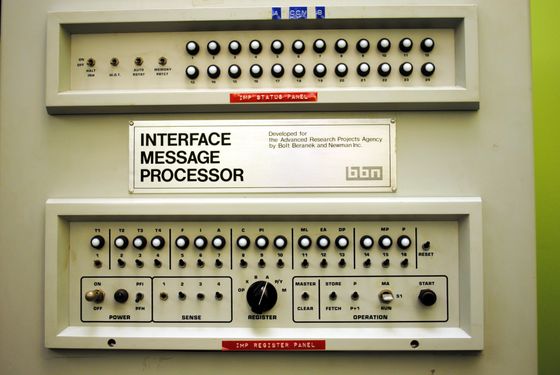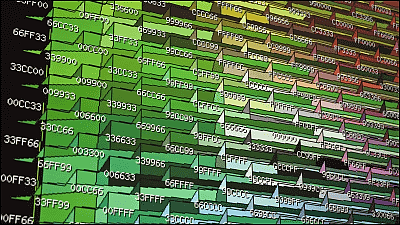What is the 'Internet birth secret' that looks back on the 50th anniversary of the Internet?

By
On October 29, 1969, ARPANET, the predecessor of the Internet, was developed. Technology business magazine Fast Company is reporting on the history of ARPANET's birth to commemorate the 50th anniversary of the Internet.
The 50th anniversary of ARPANET, the internet's predecessor
https://www.fastcompany.com/90423457/50-years-ago-today-the-internet-was-born-in-room-3420
The background of the birth of ARPANET was the presence of the Cold War between the United States and the Soviet Union. On October 4, 1957, the Soviet Union successfully launched the world's first artificial satellite, Sputnik 1 . The shock of running behind the Soviet Union in science and technology runs in the United States. In later years, this shock is called ' Sputnik shock '.

In January 1958, the United States launched the Advanced Research Projects Agency (ARPA), an organization to quickly convert state-of-the-art science and technology into military technology as a countermeasure to the Soviet Union's breakthrough. It was. ARPA was renamed in 1996 and has since become known as the
In the 1960s, ARPA invested in computer development as part of its research, but computers at that time had the problem of 'languages differ from computer to computer'. This problem was faced by Robert Taylor, also known as the Internet pioneer. There are three different computers in Mr. Taylor's office. `` If you need to communicate with another university while communicating with one university, you move to the front of another terminal, log in and contact I had to do it. ' In order to rename this annoyance, Taylor devised the idea of 'not communicating with three terminals separately, but communicating with three terminals, each with a different language, on one terminal'.

By Mark Sullivan
Moreover, the necessity of the network between terminals also increased from a practical aspect. Mr. Tyler received a request from researchers at each university to `` I want a higher performance computer '', but on the other hand, the fact that `` There is a case where each university wastes the capacity of the computer '' I knew that.
One of the causes of this waste is time difference. Because the United States is vast, the Stanford Research Institute in California, located on the west coast of the United States, uses computers at full capacity, while the Massachusetts Institute of Technology (MIT) on the east coast uses computers outside business hours. There was a case where it was not. Therefore, when summing up the computers placed in the United States, it was said that “the performance is insufficient here, but there is more than that”. Another cause is the software that the computer has. At that time, even if the University of Utah developed state-of-the-art graphics software, the only way to use the graphics software was to apply to ARPA to purchase a new computer or head to the University of Utah. What solved these problems was the interconnection between computers.

By
In 1966, Tyler, who was appointed Director of Information Technology Processing at ARPA, is trying to develop 'ARPANET', a network language and protocol that allows distant computers to connect and share content and resources. Part of the ARPA ballistic missile development fund was allotted for this research because it was 'to develop an indestructible network that would not go down due to destruction.'
ARPANET was developed based on the ' queuing theory ' by Leonard Kleinlock, who taught computer science at the University of California, Los Angeles (UCLA). Queuing theory was a mathematical analysis of how to build dynamic links to data packets from different communication sessions.
In 1969, a research team led by Crane Lock developed the Interface Message Processor (IMP), which controls packet transfer between networks, the original router. An interface to connect the IMP to the computer was also developed, and the IMP was connected to a computer called SDS Sigma 7 located at UCLA and a computer called SDS 940 from Stanford Laboratories .

The deadline for the project “First communication using ARPANET” was set on October 31, 1969. The research team will continue to work for 15 hours every day and will run the pre-alpha test on October 29, two days before the deadline.
The first ARPANET message was sent at 10:30 pm on October 29, 1969. Charlie Klein, a UCLA student programmer, sends a command 'login' on ARPANET, and the receiving Stanford Research Institute's SDS 940 recognizes the command 'login' and confirms that a specific mode is activated An experiment was conducted for the purpose. Klein starts the experiment, sends the letters “l” and “o”, and the receipt is confirmed on the SDS 940. However, Stanford University's SDS 940 crashed when 'lo' was sent. As a result, the first message sent by ARPANET is “lo”.
ARPANET will establish interconnections with UCLA, Stanford Laboratories, UC Santa Barbara, and Utah in the first month after sending the first message. Throughout the 1970s and 1980s, the network continued to expand through governments, universities and other research institutions.

In 1969, when ARPANET was born, UCLA said, “Computer networks are still in their early stages. However, in the future, technology will mature and will spread to homes and offices like electricity and telephones. 'And quoted Kleinrock's words. Today, with the widespread use of smartphones and the development of wireless communication technology, the Internet can be used almost anywhere in the world, not just at home and office.
Related Posts:
in Web Service, Posted by darkhorse_log







